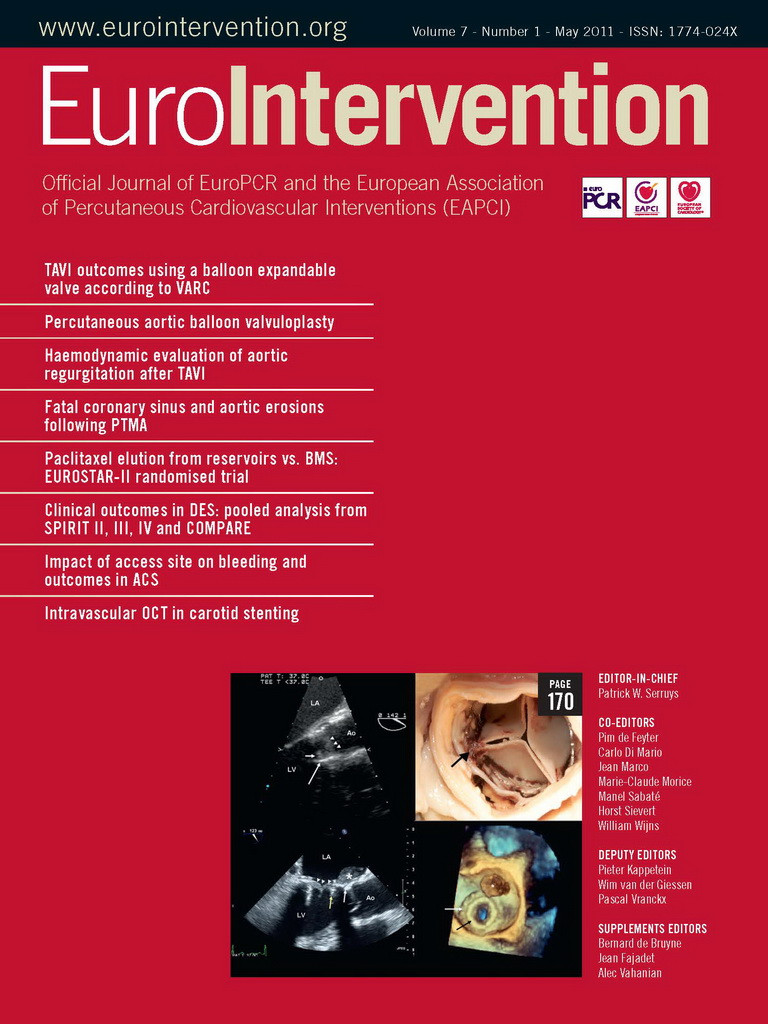Since transcatheter aortic valve implantation (TAVI) was pioneered by Alain Cribier in 2002, it has been accepted as an alternative treatment for aortic stenosis. The PARTNER US trial (Cohort B) has demonstrated its superiority compared with medical treatment, in patients thought unsuitable for aortic valve replacement (AVR)1. Cohort A results have demonstrated how TAVI compares to AVR in patients seen at high risk for open heart surgery.
Currently most procedures are performed using a retrograde, transfemoral (TF), or antegrade, transapical (TA), approach. In contrast to TF, where balloon-expandable (Edwards SAPIEN™) and self-expandable (CoreValve™) bioprostheses are commercially available in Europe, TA procedures can currently only be performed using the Edwards SAPIEN™ valve2. New devices are under review and competition will certainly improve development of the TA approach.
TA-TAVI is not limited by vascular access, offers an antegrade aortic valve passage, improves direct tactile control of device position and reduces the time interval between balloon valvuloplasty and valve deployment. These theoretical advantages make it more favourable in patients with small/diffuse diseased femoral arteries, severe ventricular septal hypertrophy, previous mitral valve replacement and for valve-in-valve procedures in failing bioprostheses. TF access reduces surgical chest trauma and potentially offers an intervention under regional anaesthesia, which may be of benefit in patients with respiratory disease.
However, there is an ongoing debate over what impact the access route itself has on outcomes. Comparable studies between TF and TA have not been conducted, and direct comparison between studies and centres is hampered by differences in inclusion criteria and risk stratification. Stroke seems to be less frequent in TA, however, conflicting results have been reported for early mortality. Thirty-day and one-year mortality in the SOURCE Registry (>2,300 patients included), was lower in TF patients (7.5% and 18.9%) compared to TA (10.7% and 27.9%). But direct comparison of these groups is impossible due to significantly higher incidence of cardiac, renal, pulmonary and vascular comorbidities in TA. In addition, vascular/access related complications are more frequent after TF (11.3% vs 2.0%, p<0.0001)3.
Patient selection clearly has an impact on midterm mortality after TAVI. Results from the Canadian Registry show similar two-year survival for TF and TA of 65% and 64% respectively4. Outstanding results have also been achieved in centres where the TA approach is seen as the first choice, with thirty-day mortalities as low as 5.7%5. This may also explain, why thirty-day mortality has been reported to be as low as 4.5% in patients where no competition with TF exists (Prevail-TA trial, 29mm Edwards SAPIEN™ prostheses, presented at EACTS 2010).
Therefore, until direct comparison demonstrates superiority of aparticular access route, a fair balance between TA and TF procedures needs to be maintained. Given that TAVI is still in its infancy, we also need to maintain an open mind regarding alternative access routes such as the subclavian artery or ascending aorta, as they may offer further advantages. Currently the various approaches should be used by multidisciplinary teams in an inclusive way to support the partnership model and generate more evidence on their individual strengths.
Conflict of interest statement
Olaf Wendler is a proctor for Edwards Lifesciences TAVI program.
He has received fees for consultant work from Edwards Lifesciences, Medtronic, SJM. Daniel Robb has no conflict of interest to declare.
References

